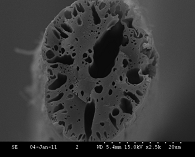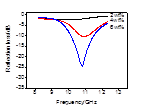
Guang Li
Donghua University, China
Title: The control of pore sizes in porous carbon fiber and its enhanced microwave absorption
Biography
Biography: Guang Li
Abstract
As one of the carbon materials, the porous carbon fiber has played a great role as catalyst support, separation by absorption; gas storage etc. based on its high aspect ratio. Among related publications, few studies focused on the microwave absorption characteristics of porous carbon fibers, although a great number of papers concerned carbon materials such as carbon black, fiber, tube as microwave absorbents. In this study, porous carbon fibers were prepared through carbonization of the blend fibers composed of poly (acrylonitrile) (PAN) and poly (methyl methacrylate) (PMMA) with 70 wt % of PAN. The pore size in porous carbon fibers could be controlled by changing the average molecular weight of PAN. The pores of 1-10μm and 0.1-1μm in diameter were obtained from the blend fibers where the average molecular weight of PAN is 51000 and 83000 g/mol, respectively (Figure 1). The obtained porous carbon fibers were used as absorbents to make epoxy composites with addition of 2-6 wt%. The microwave absorption properties were stimulated based on a model for a single-layer plane wave absorber. The results explained the porous carbon fiber showed much better microwave absorption than carbon nanofiber, and the porous carbon fiber with small size of pores showed much better microwave absorption than that with large size of pores, as shown in figure 2. It is believed that the enhanced microwave absorption from the porous carbon fibers is due to a combination of the dielectric-type absorption and the interference of multi-reflected microwaves. When the pore size in porous carbon fibers is large, the air-absorber interfaces could be reduced at the same pore volume. Therefore, the superior microwave absorption of composites filled by porous carbon fiber with smaller pore size may be ascribed to the combination of absorption and interference of microwaves.


Figure 1: Cross section of porous carbon fiber with small (left) and large (right) pore-size.


Figure 2: The microwave absorption of porous carbon fiber with small (left) and large (right) pore-size

